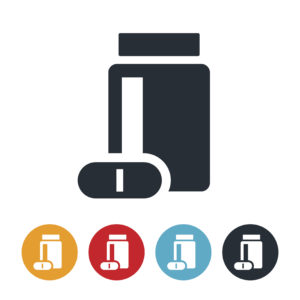** FTC Claims Major Scalp in Fake News Case **
By: Brent E. Johnson

The recent political season has contributed new words to our lexicon — “alternative facts” (Thanks, Kellyanne!) and “fake news.” While these terms may sound novel to us, the Federal Trade Commission has long taken action to curb such practices in commercial advertising under its mandate to enforce prohibitions on unfair or deceptive acts or practices (15 U.S.C. § 45(a)) and specifically false advertisements for food, drugs, devices, services, or cosmetics (15 U.S.C. § 52).
Recently, the FTC obtained a $29+ million personal judgment (ouch!) against a Tampa Bay businessman based on advertising the FTC claimed lacked scientific substantiation and misled consumers by using a fake news site and article. Fed. Trade Comm’n v. NPB Advert., Inc., No. 8:14-CV-1155-T-23TGW, 2016 WL 6493923, at *9 (M.D. Fla. Nov. 2, 2016). The case centered around one Nicholas Congleton, who — inspired by a clip from The Dr. Oz Show discussing a clinical study of the weight loss effects of green coffee extract (the Vinson Study) — founded Pure Green Coffee. The business was largely operated online, relying on search engine and other digital advertisements (click bait) to the tune of $9.5 million. This advertising investment proved to be money well spent. From 2012 to 2014, Pure Green Coffee generated gross receipts just shy of $34 million.
Much of Pure Green Coffee’s advertising practices are standard grist for the FTC mill – inadequate substantiation for efficacy claims, unsupported establishment claims, and customer testimonials. Pure Green Coffee promised consumers fabulous results – twenty-eight pounds in nine weeks or ten pounds and one-to-two inches of belly-fat in a month. Although Mr. Congleton admitted in his deposition that he had no scientific basis for Pure Green Coffee’s weight loss claims, in opposition to the FTC’s motion for summary judgment he cited to “news articles, blog entries, and manufacturers’ brochures” (non-starters) as well as nine studies – chief among them, the Vinson Study Dr. Oz discussed on TV. Unfortunately, most of the studies either did not involve green coffee extract or weight loss. The Vinson Study was debunked by the FTC’s expert on several bases – but primarily because Dr. Vinson, himself, withdrew it.
The FTC based its argument that Pure Green Coffee made establishment claims in its ads in part on a photo — a man wearing a white doctor’s coat and stethoscope holding a pill. The Court found that this image implied that a physician or scientist had established Pure Green Coffee’s efficacy. As for testimonials, Pure Green Coffee’s online ads committed the cardinal sin – they did not disclose that the participants were compensated.
Which brings us to fake news. Pure Green Coffee purchased the domain “dailyconsumeralert.org” and loaded the page with a spoof banner for “Women’s Health Journal,” a list of several health- or fitness-related categories, and a fake article by a non-existent columnist that offered a purportedly unbiased test of the efficacy of green coffee extract that Mr. Congleton copied and pasted from another website. The online ad also employed the ever popular “AS SEEN ON” advertising device next to the logos of CBS, ABC, MSNBC, and CNN – creating the impression that these networks reported favorably on Pure Green Coffee. The court found that the webpage appeared as a bona fide news outlet and thus misled consumers — despite Mr. Congleton placing the word, “Advertorial” at the top.
Mr. Congleton’s case was not a particularly difficult one for the FTC. But it nevertheless presents a cautionary tale to supplement sellers. First, the more specific the claim, the closer the FTC will scrutinize the substantiation. Depending on the nature of the claim the F.T.C. will require the study to include randomized clinical trials, human as opposed to animal proxy trials, and will take a hard look at the methodology and controls in the testing. Second, images of folks in white coats or hospital scrubs in supplement ads are sure to grab the FTC’s attention. Third, paid endorsers must be identified as such. And finally, supplement makers must guard against intentionally or inadvertently creating fake news.
On this last point, it is critical that supplement companies (and any company engaged in internet marketing for that matter) familiarize themselves with the FTC’s December 2015 Native Advertising Guidelines. These guidelines were developed to advise businesses on how to advertise online without running afoul of the FTC’s prohibition of fake news. While a business might believe its online advertisement clearly appears as such when a consumer views it and, therefore, is not deceptive, the FTC’s position is that “advertisers cannot use ‘deceptive door openers’ to induce consumers to view advertising content. Thus, advertisers are responsible for ensuring that native ads are identifiable as advertising before consumers arrive at the main advertising page.” (Emphasis added.) This is no easy task — as shown by the Guidelines, themselves — which contain 17 different examples of online advertisements and how each should be treated. Suffice it to say, native advertising is a hot button issue for the FTC, and enforcement actions against businesses who ignore the Agency’s guidelines are a growth industry for advertising defense lawyers.
